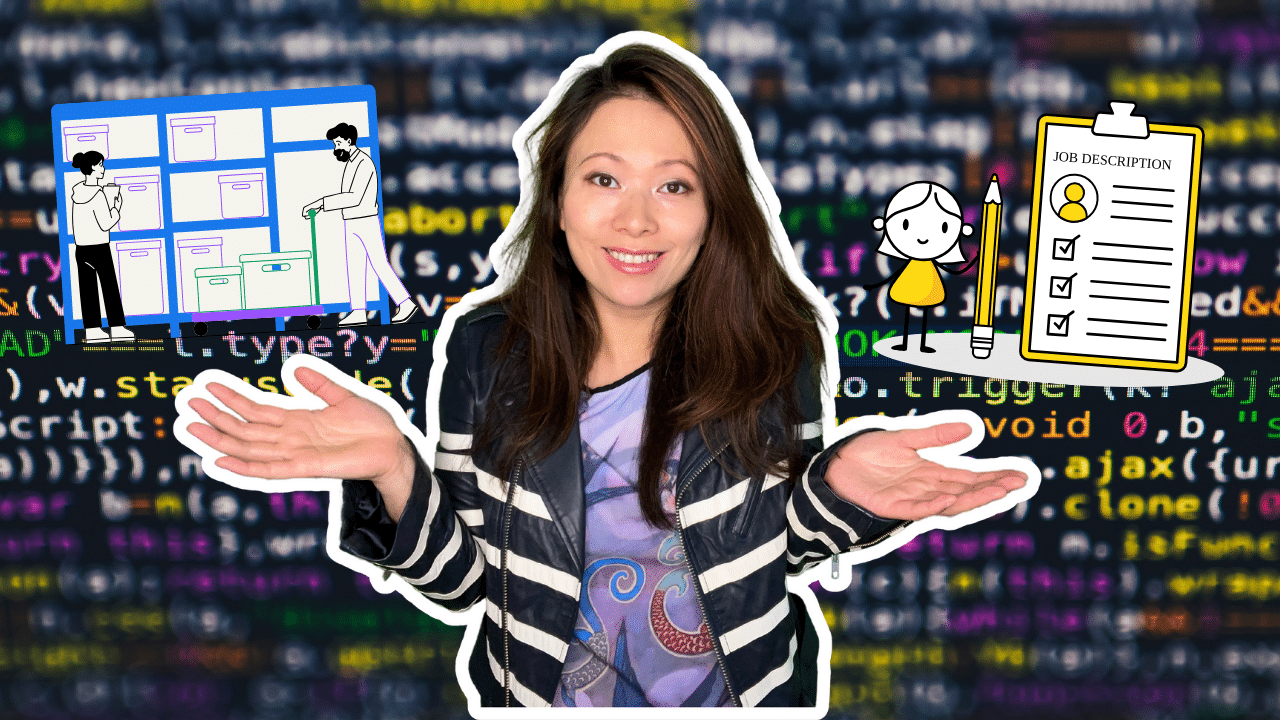Most Common AI Functions and Roles (2023)
If you are reading this blog post, you already know that AI has had a significant impact on multiple functions and roles within an organization. However, it’s not easy to memorize the names of all the AI functions and roles unless you are in HR and actively hiring AI talents.
In this article, we break down popular AI functions and roles so they can be top of mind. Feel free to bookmark this webpage for future reference!
AI Functions Inside An Organization
AI has the potential to influence various aspects of an organization, depending on the industry, the size of the company, its goals, and the nature of its operations. It’s important to note that AI functions and roles do not stop at the machine learning and development level. Here’s a broad overview of how AI can be integrated or have influence across different organizational departments:
Sales & Marketing:
- Customer Insights: Use AI to analyze customer data and extract insights about purchasing behavior and preferences.
- Chatbots: Deploy AI-driven chatbots for customer support and initial sales inquiries.
- Personalized Marketing: AI can segment customers and tailor marketing campaigns to individual preferences.
Human Resources:
- Recruitment: AI can scan resumes to find suitable candidates based on set criteria.
- Employee Retention: Analyze employee data to predict potential turnovers and identify factors leading to employee dissatisfaction.
- Training: Personalized training modules can be created using AI to cater to individual employee needs.
Finance:
- Fraud Detection: Use AI to identify unusual transactions that could indicate fraudulent activity.
- Forecasting: Predict financial trends based on historical data and market indicators.
- Expense Management: Automated tools can streamline expense approvals and audits.
Supply Chain & Operations:
- Demand Forecasting: Predict product demand more accurately to manage inventory.
- Optimized Logistics: AI can suggest optimized routes for delivery and transportation.
- Predictive Maintenance: Predict when machinery or equipment is likely to fail, allowing for timely maintenance.
Research & Development:
- Product Development: AI can analyze customer feedback to guide product enhancements or new product creation.
- Simulation and Testing: Use AI-driven simulations to test products under various conditions.
Customer Service:
- Automated Support: Deploy chatbots and virtual assistants to handle frequent customer queries.
- Sentiment Analysis: Analyze customer feedback and reviews to gauge satisfaction and identify areas of improvement.
IT & Security:
- Cybersecurity: AI can detect unusual patterns and potential security breaches.
- Network Optimization: Predict network bottlenecks or failures and optimize performance.
Administration:
- Automated Scheduling: AI tools can optimize meeting schedules, and resource allocation, and even manage calendar appointments.
- Document Management: AI can categorize, tag, and even summarize large volumes of documents.
Strategy & Management:
- Decision Support Systems: Use AI to analyze vast amounts of data for strategic decision-making.
- Market Analysis: Analyze market trends, competitor moves, and potential growth areas using AI-driven insights.
Quality Assurance:
- Automated Testing: In software companies, AI can run automated tests and even predict where bugs might occur.
- Product Quality Monitoring: Monitor product quality in real-time in manufacturing settings and make adjustments.
Popular AI Job Titles Referenced Today
As AI continues to evolve and become more integrated into various sectors, a diverse range of job titles related to AI has emerged. Here are some of the most popular titles associated with AI talents:
- Data Scientist: Professionals who work with large datasets to develop predictive models and extract valuable insights.
- Machine Learning Engineer: Engineers who specialize in creating, implementing, and maintaining machine learning models.
- Deep Learning Engineer: Specializes in deep learning frameworks and neural networks to develop sophisticated models.
- AI Research Scientist: Researchers who focus on exploring new and advanced techniques in AI and machine learning.
- Natural Language Processing Engineer: Focuses specifically on the challenges related to processing and understanding human language.
- Computer Vision Engineer: Specializes in developing models and algorithms that enable machines to interpret and act on visual data.
- AI Product Manager: Manages the development of AI-driven products, ensuring they meet market needs and are user-friendly.
- AI Architect: Designs the structure of AI solutions, ensuring scalability, efficiency, and integration with other systems.
- AI Trainer: Interacts with AI systems, especially chatbots or virtual assistants, to refine and guide their responses.
- Robotics Engineer: Develops and implements robots, often integrating AI components to enable autonomous operations.
- AI Ethics Researcher: Focuses on the ethical, societal, and philosophical implications and challenges related to AI.
- AI Specialist/Solutions Consultant: Provides AI expertise in a consultative capacity, helping organizations understand and implement AI solutions.
- MLOps Engineer: Works on deploying, monitoring, and maintaining machine learning models in production settings, integrating DevOps and machine learning workflows.
- Quantitative Analyst (often in finance): Uses AI and statistical methods to manage risk, make investment decisions, or predict market movements.
- AI Policy and Regulation Expert: Specializes in the legal and regulatory dimensions of AI, helping to draft guidelines, policies, or regulations.
- Conversational Designer: Specializes in creating natural and efficient interactions for chatbots and virtual assistants.
- Technical Evangelist (AI domain): Advocates for specific AI technologies, platforms, or methods, often working for technology companies to promote their solutions.
Conclusion
AI has the potential to introduce efficiencies and optimizations across the organization, it’s also essential to approach AI integration with a clear understanding of the business needs, ethical considerations, and potential disruptions. Proper training and change management are also crucial to ensure that employees understand and can work alongside AI systems effectively.
While we have listed some of the more popular functions, roles, and titles, it’s worth noting that the world of AI is vast and continues to grow. As a result, new concepts, and skill sets are frequently emerging, reflecting the ever-evolving nature of the field.
So let’s stay in touch and feel free to comment below with new learnings in AI functions and roles!

